- Catherine
- September 19, 2023
- 2:30 am

FiberMall
Answered on 2:30 am
Optical transceivers such as OSFP (Octal Small Form Factor Pluggable) and QSFP-DD (Quad Small Form Factor Pluggable Double Density) are integral to significant high-speed, high-density networking applications in data centers and telecommunications. Dealing with new network speeds and managing bandwidth needs, different factors might lead to a preference for one over the other.
Before listing the pros and cons, it is important to note the crucial differences between them:
1. Form Factor: OSFP is larger than QSFP-DD, resulting in a lower port density. However, this larger size allows OSFP to handle higher wattage, providing better heat dissipation and therefore potentially higher bandwidth per port in the future.
2. Compatibility: QSFP-DD was designed with backward compatibility with QSFP28 in mind. You can use existing QSFP28 cables and modules in a QSFP-DD port.
Now, let’s discuss some of the pros and cons:
OSFP
Pros:
1. Higher Power Handling: OSFP can handle higher power up to 15W, accommodating future bandwidth needs. There is the potential to reach up to 800Gbps for future uses.
2. Thermal Efficiency: The larger form factor leads to better heat dissipation, which may become increasingly important as connections’ power utilization and density increase.
Cons:
1. Low Port Density: Due to their larger size, data center rack units fitted with OSFP ports have a lower overall port density compared to those using QSFP-DD.
2. No Backward Compatibility: OSFP is not backward compatible with existing form factors, which can complicate upgrades and increase costs.
QSFP-DD
Pros:
1. Backward Compatibility: QSFP-DD is backward compatible with QSFP, and QSFP28 modules. This allows for easier upgrading while lowering costs by reusing existing hardware.
2. High Port Density: The smaller QSFP-DD form factor allows for more ports on a single switch, leading to a more compact and dense arrangement which can save precious space in data centers.
Cons:
1. Lower Power Handling: QSFP-DD power handling is lower than OSFP, making it harder to scale for future increased transmission rates.
2. Thermal Concerns: Due to the high port density and higher power demand for future standards, managing thermal dissipation may become a challenge.
The choice between QSFP-DD and OSFP will depend on your specific circumstances and long-term network goals. If you have existing QSFP infrastructure and you’re seeking a high-density configuration with measured growth in mind, QSFP-DD is a solid choice. If, however, you’re preparing for immense growth and want to set up your data center for future advancements (especially those requiring high power and efficient thermal handling), OSFP could be the better choice.
People Also Ask
Application Introduction for 800G OSFP and 800G QSFP-DD Optical Modules
Benefits of Migrating to 800G Technology Migrating to 800G technology enables data centers and high-performance computing environments to address the ever-increasing demand for higher bandwidth at a lower cost and with reduced power consumption per gigabit. The primary advantages include: Available 800G Optical Modules and Cables A comprehensive selection of
10 Gigabit Ethernet Switch: Unleashing the Power of 10GB Networking
Never has the need been greater for network performance to be faster and more reliable. For anyone supporting a thriving enterprise, managing resource-heavy applications, or simply looking to scale up their infrastructure, a 10 Gigabit Ethernet (10GbE) switch is the first step towards unrivaled speed and efficiency. This blog takes
The Ultimate Guide to Choosing a 48-Port Gigabit Ethernet Switch
The lifeblood of an efficient network infrastructure in today’s dynamic digital world is large-scale data transmission. In a growing enterprise or data center, a strategically selected 48-port gigabit Ethernet switch ensures performance continuity without restrictions on future growth. From the multitude of models featuring an array of specifications and intended
Unlocking the Power of a 24-Port Network Switch: A Comprehensive Guide
A 24-port network switch plays a pivotal role in modern networking settings, as it enables the effortless interconnection of numerous devices and guarantees optimal data flow in addition to satisfactory network performance. If you are running a sizeable office, organizing a home network, or expanding an IT framework, it is
Choosing a 16-Port Gigabit Ethernet Switch: What You Need to Know
Selecting the proper hardware when managing a developing network is essential for seamless and dependable connectivity. For most small businesses, home offices, or IT specialists seeking to develop their networks, a 16-port Gigabit Ethernet switch tends to be the perfect fit and eliminates the need for larger commercial setups, which
The NVIDIA GB300 NVLink Liquid-Cooled Switch
At this year’s GTC conference, NVIDIA introduced its latest GB300 AI chip and AI server. However, detailed information on the GB300 liquid-cooled switch has been scarce. The following images of the GB300 NVLink liquid-cooled switch were provided by the overseas partner STH. Displayed at NVIDIA GTC 2025, the GB300 NVLink
Related Articles

800G SR8 and 400G SR4 Optical Transceiver Modules Compatibility and Interconnection Test Report
Version Change Log Writer V0 Sample Test Cassie Test Purpose Test Objects:800G OSFP SR8/400G OSFP SR4/400G Q112 SR4. By conducting corresponding tests, the test parameters meet the relevant industry standards, and the test modules can be normally used for Nvidia (Mellanox) MQM9790 switch, Nvidia (Mellanox) ConnectX-7 network card and Nvidia (Mellanox) BlueField-3, laying a foundation for
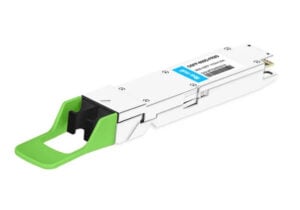
Application Introduction for 800G OSFP and 800G QSFP-DD Optical Modules
Benefits of Migrating to 800G Technology Migrating to 800G technology enables data centers and high-performance computing environments to address the ever-increasing demand for higher bandwidth at a lower cost and with reduced power consumption per gigabit. The primary advantages include: Available 800G Optical Modules and Cables A comprehensive selection of
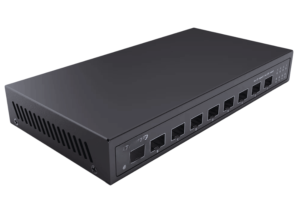
10 Gigabit Ethernet Switch: Unleashing the Power of 10GB Networking
Never has the need been greater for network performance to be faster and more reliable. For anyone supporting a thriving enterprise, managing resource-heavy applications, or simply looking to scale up their infrastructure, a 10 Gigabit Ethernet (10GbE) switch is the first step towards unrivaled speed and efficiency. This blog takes
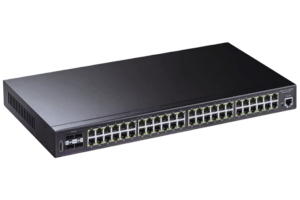
The Ultimate Guide to Choosing a 48-Port Gigabit Ethernet Switch
The lifeblood of an efficient network infrastructure in today’s dynamic digital world is large-scale data transmission. In a growing enterprise or data center, a strategically selected 48-port gigabit Ethernet switch ensures performance continuity without restrictions on future growth. From the multitude of models featuring an array of specifications and intended
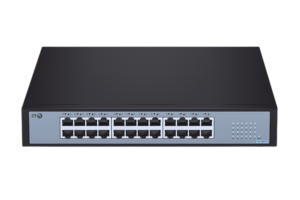
Unlocking the Power of a 24-Port Network Switch: A Comprehensive Guide
A 24-port network switch plays a pivotal role in modern networking settings, as it enables the effortless interconnection of numerous devices and guarantees optimal data flow in addition to satisfactory network performance. If you are running a sizeable office, organizing a home network, or expanding an IT framework, it is
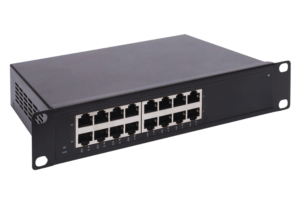
Choosing a 16-Port Gigabit Ethernet Switch: What You Need to Know
Selecting the proper hardware when managing a developing network is essential for seamless and dependable connectivity. For most small businesses, home offices, or IT specialists seeking to develop their networks, a 16-port Gigabit Ethernet switch tends to be the perfect fit and eliminates the need for larger commercial setups, which
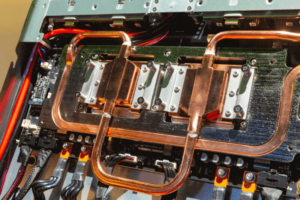
The NVIDIA GB300 NVLink Liquid-Cooled Switch
At this year’s GTC conference, NVIDIA introduced its latest GB300 AI chip and AI server. However, detailed information on the GB300 liquid-cooled switch has been scarce. The following images of the GB300 NVLink liquid-cooled switch were provided by the overseas partner STH. Displayed at NVIDIA GTC 2025, the GB300 NVLink
